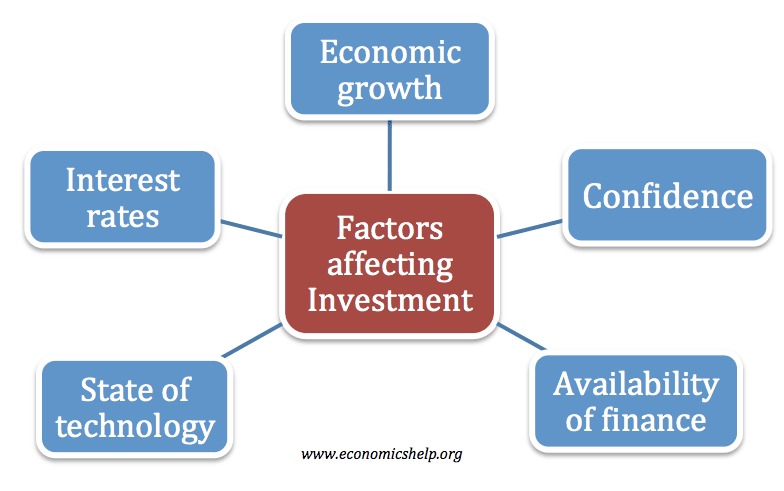With this increase in risk, the discount rate can now be risk-adjusted appropriately. This chart highlights the decline of capital in time as a result of various discount rate rates. The other integral input variable for calculating NPV is the discount rate. There are lots of approaches for computing the proper discount rate. Considering that numerous individuals think that it is suitable to use greater discount rate rates to change for threat or other elements, they may choose to use a variable discount rate. Reinvestment rate can be defined as the rate of return for the firm's financial investments on average, which can likewise be used as the discount rate.
The interest rate, in this context, is more commonly called the discount rate. The discount rate represents some cost (or group of costs) to the financier or financial institution. All of these costs combine to identify the rates of interest on an account, which rates of interest in turn is the rate at which the amount is marked down. If FV and n are held as constants, then as the discount rate (i) boosts, PV decreases. To determine today value, you would need to discount it by some interest rate (i). The rate that member banks charge each other is the federal funds rate and the rate the Fed charges is described as the discount rate.
The discount rate is the rate that the main bank actual controls. That is the rate banks charge each other, and is affected by the discount rate. In this manner, the discount rate in tandem with the fed funds target rate become part of an expansionary policy system. The worth of a bond is obtained by marking down the bond's predicted money flows to the present utilizing a proper discount rate. For that reason, the worth of a bond is gotten by marking down the bond's predicted cash flows to the present utilizing a suitable discount rate. In practice, this discount rate is often determined by reference to similar instruments, provided that such instruments exist.
Get This Report about How To Finance A Home Remodel

The present value of an annuity is the worth of a stream of payments, discounted by the interest rate to represent the payments being made at numerous moments in the future. The $1,000 distinction reflects the rates of interest the Fed charges for the loan, called the discount rate. The Fed could utilize the discount rate for expansionary financial policy. For example, the Fed raises the discount rate. For example, the Fed raises the discount rate. The Federal Reserve uses the discount rate to reduce cash supply They can get shampoos and other hair items at a more affordable rate and sell them to customers at full rates.
Another difficulty is diverting, which is when business sell to carry members at a more affordable rate instead of pass on cost savings to consumers. A trade rate discount is offered by a seller to a buyer for purposes of trade or reselling, instead of to an end user. They can get shampoos and other hair products at a less expensive rate and offer them to consumers at full rates. Presume a service sells a ten years, $100,000 bond with a reliable yearly interest rate of 6% for $90,000. The journal entry for that transaction would be as follows: Cash $90,000 Discount Rate $10,000 Bond Payable $100,000 The interest expense each duration is $6,000, and the amortization rate on the bond payable equals $1,000 ($ 100,000/ 10 years).
Usually, the amortization rate is calculated by dividing the discount by the variety of periods the business has to pay interest. That implies that the amortization rate on the bond payable equivalent $1,000 ($ 100,000/ ten years).
The Best Guide To How To Finance Building A Home
This site or its third-party tools puerto vallarta timeshare utilize cookies, which are necessary to its functioning and required to attain the functions illustrated in the cookie policy. By closing this banner, scrolling this page, clicking a link or continuing to search otherwise, you accept our Privacy Policy.
A few weeks ago, I remained in a conference with about 15 wise property and finance people, numerous of whom have Ivy League MBA's (Which of these arguments might be used by someone who supports strict campaign finance laws?). We spent about 20 minutes talking about and debating Look at this website using Discount Rates in analyzing genuine estate financial investments. Because there was some confusion amongst the group about how to choose a proper discount rate, I've decided to write a post about it. Here goes. In commercial genuine estate, the discount rate is used in reduced capital analysis to compute a net present value. The discount rate is specified listed below: The discount rate is used in affordable money circulation analysis to compute the present worth of future capital.

There is not a one-size-fits-all technique to figuring out the appropriate discount rate. That is why our conference went from a conversation to a dynamic debate. Nevertheless, a general general rule for selecting a proper discount rate is the following: * WACC is specified as the weighted average of all capital sources utilized to fund an investment (i. e. financial obligation & equity sources). Using this method, financiers are able to ensure that their initial investment in the possession attains their return objectives. Now that we have meanings and fundamentals out of the method, lets dive into how discount rates are figured out in practice and in theory.
Some Known Incorrect Statements About Which Results Are More Likely For Someone Without Personal Finance Skills? Check All That Apply.
It can be thought of as the chance cost of making the investment. The opportunity expense, would be the cost associated to the next best investment. In other words, the discount rate need to equate to the level of return that comparable stabilized investments are presently yielding. If we understand that the cash-on-cash return for the next best financial investment (opportunity expense) is 8%, then we ought to use a discount rate of 8%. Accounting vs finance which is harder. A discount rate is a representation of your level of confidence that future income streams will equal what you are forecasting today. To put it simply, it is a step of risk.
For that reason, we should discount future cashflows by a greater portion since they are less likely to be understood. Alternatively, if the investment is less dangerous, then theoretically, the discount rate should be lower on the discount rate spectrum. Therefore, the discount rate utilized when analyzing a supported class An apartment or condo complex will be lower than the discount rate used when analyzing a ground-up shopping center advancement in a tertiary market. The higher the Discount rate Rate, the higher the perceived risk The lower the Discount Rate, the smaller the viewed threat Remember that the level of danger is a function of both the asset-level risk along with business strategy risk.